It is rare to see new wines from the top grand crus like Richebourg, Romanee Saint-Vivant, or Musigny. The ownership structures there are relatively fixed, but despite this, Domaine Tawse has been able to create a new Musigny over the last 10-15 years. Furthermore, it’s an exciting wine that has been pushing some of the more established estates quality-wise in recent years.
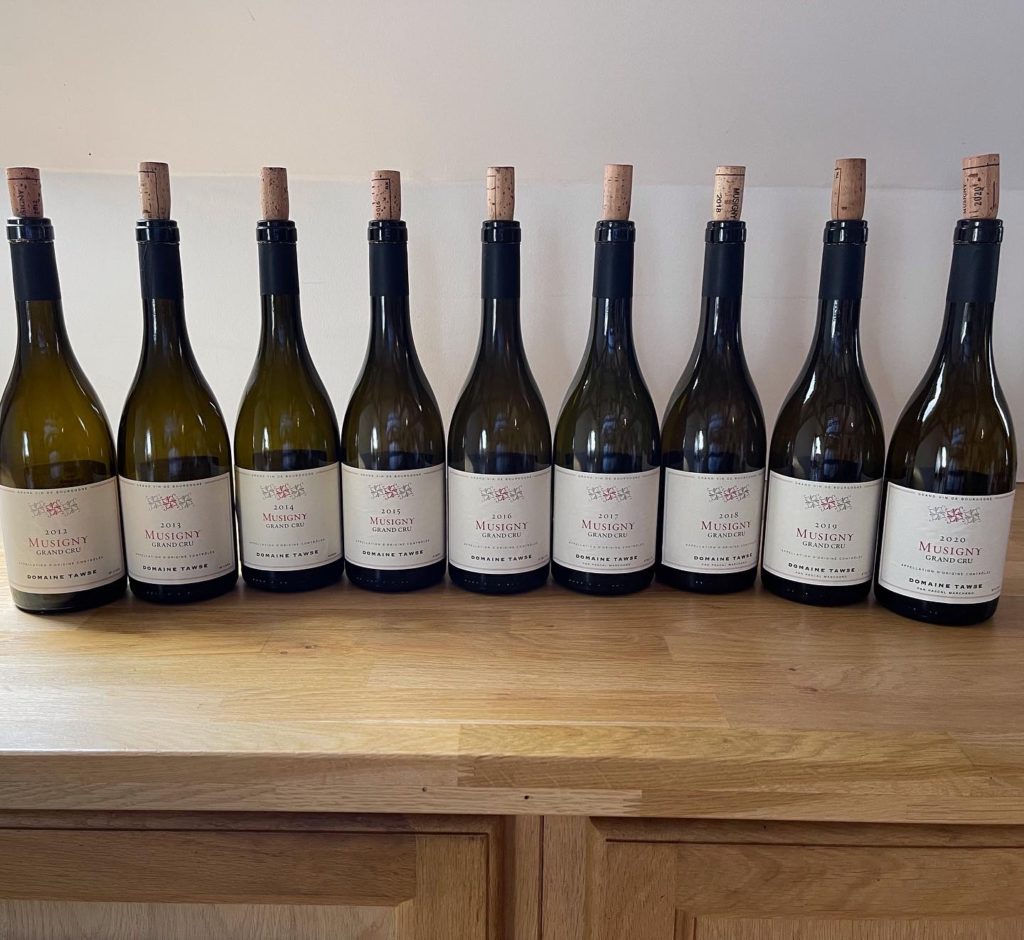
The Tawse Musigny is the smallest holding in the vineyard (just smaller than that of Domaine Georges Roumier); it consists of two plots located below the road running alongside the mighty vineyard.
Last week we had the pleasure of tasting the vintages 2012-2020 in the fine company of the winemaking team at Marchand-Tawse, but also with Morey Tawse and John Harris, the two owners of the Musigny plots. The winemaking team at Marchand-Tawse consists of Pascal Marchand, Mark Fincham, and Thomas Dinel.
Musigny from the north: One vineyard, three sections
The Musigny vineyard has three main sections: from the north, there is Les Musigny or Grands Musigny (the main part); south of it is Les Petits Musigny (a de Vogüé monopole); and lastly, there is a “recent” southerly addition to the vineyard comprising some plots in the climate La Combe d’Orveau (added to Musigny in 1929 and 1989). The map below shows the divisions, from right to left.
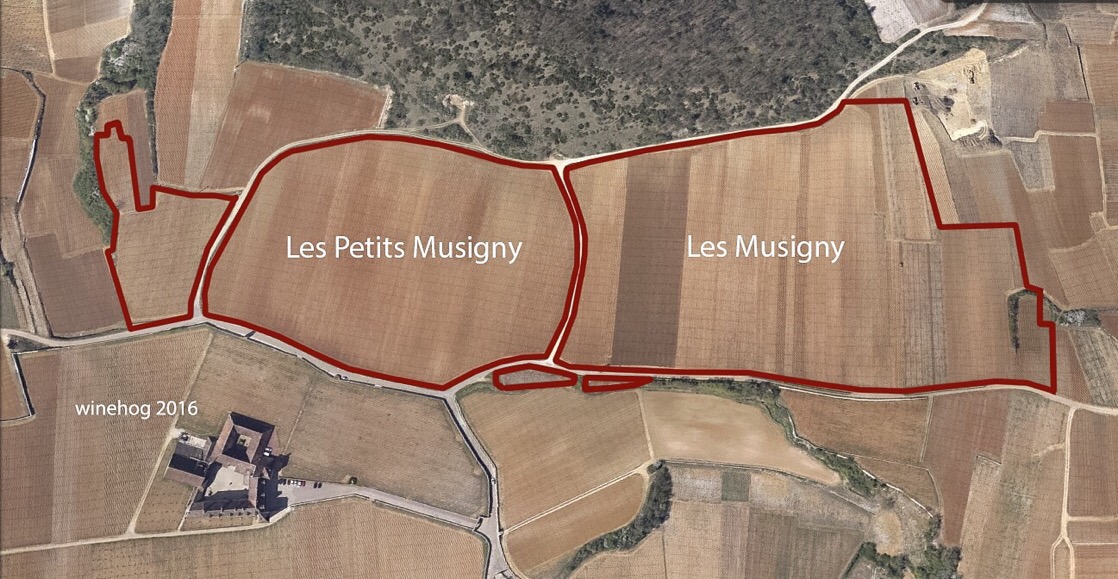
Tawse Musigny – the plots
The Domaine Tawse Musigny comes from two small plots located at the bottom of the Musigny vineyard, below the road. They are part of Les Musigny (the northernmost section), and are the only wine-producing plots located below the road (see map below).
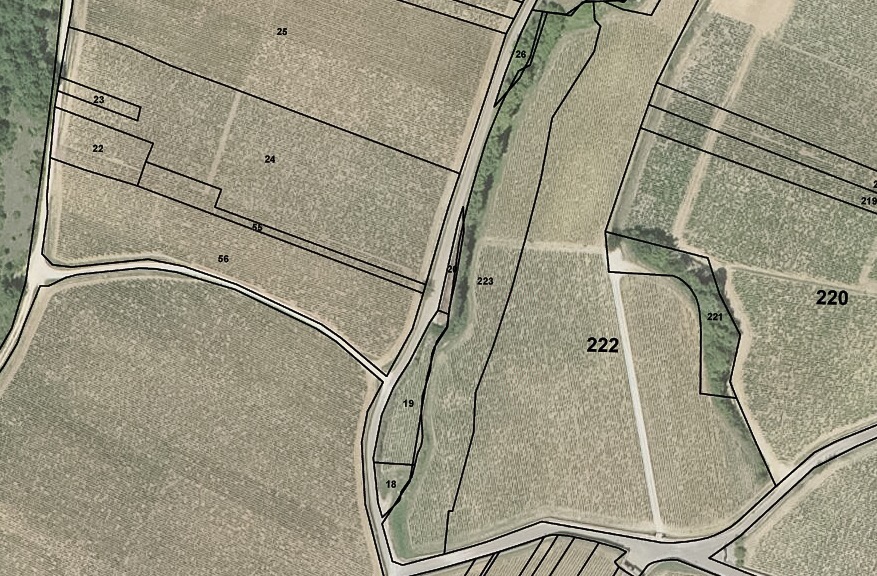
There are in total four plots of Les Musigny located below the road going from Chateau du Clos de Vougeot towards Chambolle-Musigny. Only two of these are planted with vines, the others being very small and not suitable for producing wine.
The map below shows the two Tawse plots. The largest – 0.0760 ha, cadastre no. 19 on the map – was acquired from Domaine Christian Confuron in Vougeot.
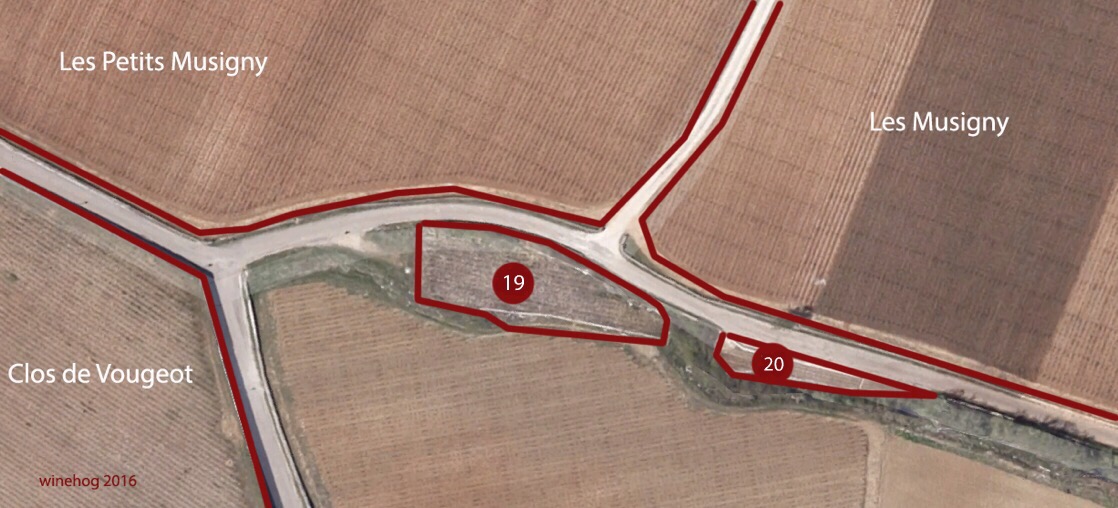
The other (cadastre no. 20) is only 156 square meters, and was acquired in 2014 from André Porcheret of Monthelie-Douhairet-Porcheret.
Domaine Tawse is the smallest owner of Musigny, with a total of 0.0916 ha, marginally smaller than Domaine Georges Roumier, which owns 0.0966 ha. Actually, only two producers own more than a hectare of Musigny – Domaine J.-F. Mugnier (1.1358 ha), and the dominant owner, Domaine Comte Georges de Vogüé, with 7.1208 ha.
It should be noted that Moray Tawse owns 50% of the Musigny plots. The other half is owned by his friend John Harris, another Canadian.
Musigny on the edge of Vougeot
The aerial photos from Google Maps do not quite give the impression of how precipitously the plots are situated on the edge of the Musigny ridge, well above Clos de la Perriere in the Vougeot appellation.
The photo below shows the smallest of the Tawse plots (no. 20 on the map) as it was in March 2016 when some work to support the edge of the ridge was being done. There is a six- to ten-metre drop from this plot down to Clos de la Perriere, so it is literally Musigny on the edge.
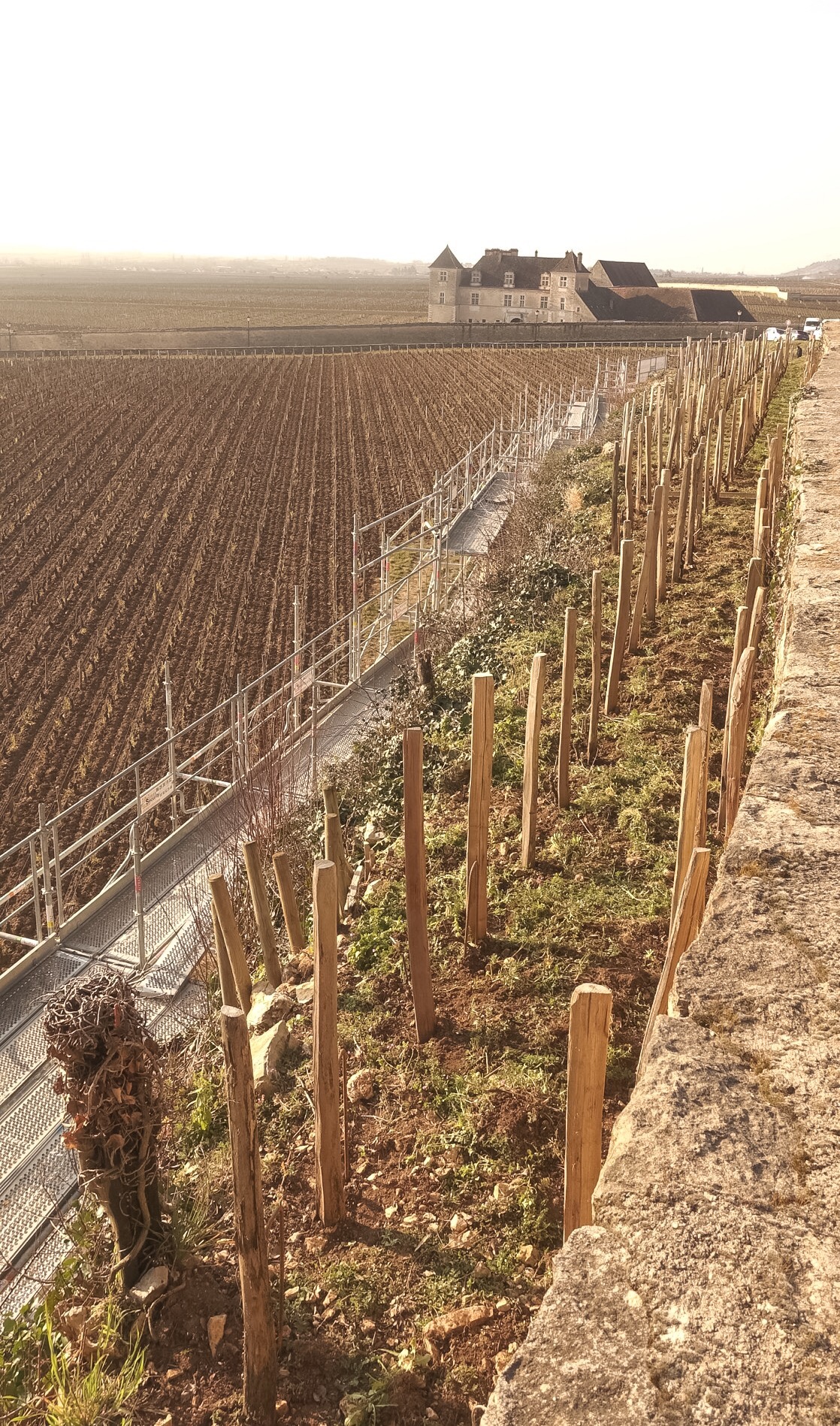
The story about this plot is quite interesting, as André Porcheret – former winemaker at the Hospices de Beaune and Domaine Leroy – took note of the area around the turn of the millennium, and saw on the cadastre maps that it was in fact a part of Musigny. He acquired the plot and planted it with vines – 195 of them to be precise, according to Clive Coates – creating a new Musigny parcel.
The photo below shows the larger of the Tawse plots, located on the slope down towards Chateau Clos de Vougeot (seen in the background).
This plot is situated under Les Petits Musigny, but is nonetheless a part of Les Musigny. The difference in altitude between the two plots is quite significant; the southern end of the plot is almost at the same elevation as the Clos de la Perriere below it.
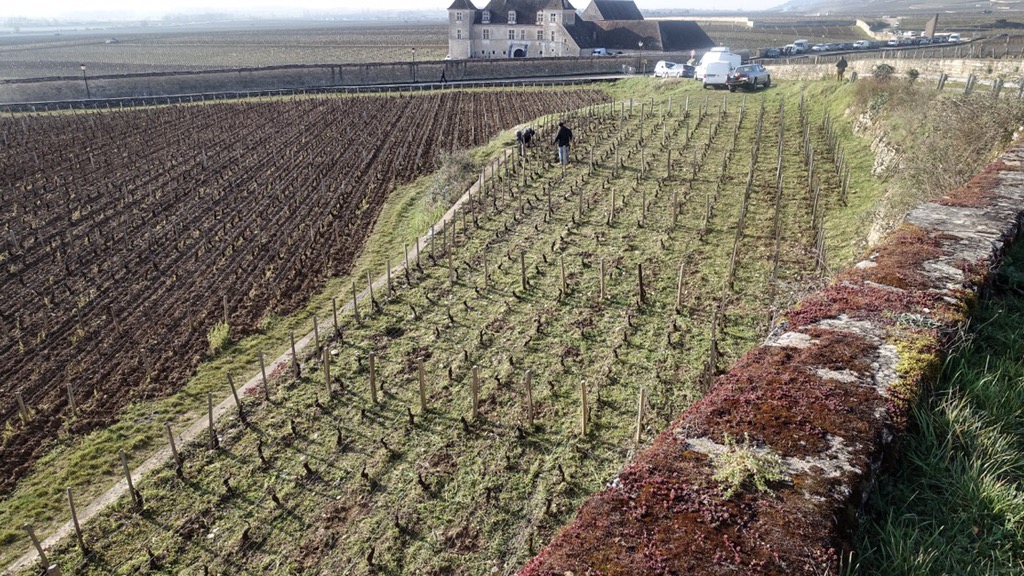
Domaine Tawse Musigny – the wine
The first Musigny released under the Marchand-Tawse label was the 2009, made from juice or grapes acquired from Domaine Christian Confuron. From 2009 on, Marchand-Tawse has produced a Musigny every year.
In 2012, the Marchand-Tawse team took full control of the Musigny vines and started the process of cleaning it up and optimizing the viticulture.
The first vintage to including the production from both plots was 2015. And from 2014, the wine has been sold under the Domaine Tawse label.
Domaine Tawse Musigny 2012
The 2012 is in rough compagny, but does represent the potential of this Musigny. It’s quite finely perfumed and floral, although the oak is a bit forward (Cavin oak was used in this cuvee). In this context, it lacks concentration and precision, but does show the Musigny pedigree, especially on the nose. One barrel produced (228 litres).
(Drink from 2030) – Very Good – (90p) – Tasted 03/06/2022 – ![]()
Domaine Tawse Musigny 2013
The 2013 is fresher and more energetic, with a lively mid-palate and the Cavin oak better integrated on the nose. This has better lift and energy, with a fine note on the palate at the end. Light-footed, it’s quite an improvement from the 2012, with good concentration given the vintage. 175 litres produced.
(Drink from 2030) – Very Fine – (92-93p) – Tasted 03/06/2022 – ![]()
Domaine Tawse Musigny 2014
In 2014 the top plot was added into the cuvee. Quite intense, this shows bigger aromatics, supported now by Cadus oak dried for four years. Opening up in the glass, there is good concentration here for the vintage, although the extraction could perhaps have been a bit lighter, as darker fruit notes tend to dominate. 300 litres produced.
(Drink from 2030) – Very Fine – (93p) – Tasted 03/06/2022
You need to login as a Premium subscriber to read the rest of this article. If you are not a Premium Subscriber, use the subscribe function and sign-up.

 - A true vin d’émotion – a Burgundy of passion
- A true vin d’émotion – a Burgundy of passion - A truly hedonistic wine – lively and enjoyable
- A truly hedonistic wine – lively and enjoyable - A vivacious wine for pure indulgance
- A vivacious wine for pure indulgance - A potential vin d´émotion - frais et léger
- A potential vin d´émotion - frais et léger
Leave a Reply
You must be logged in to post a comment.